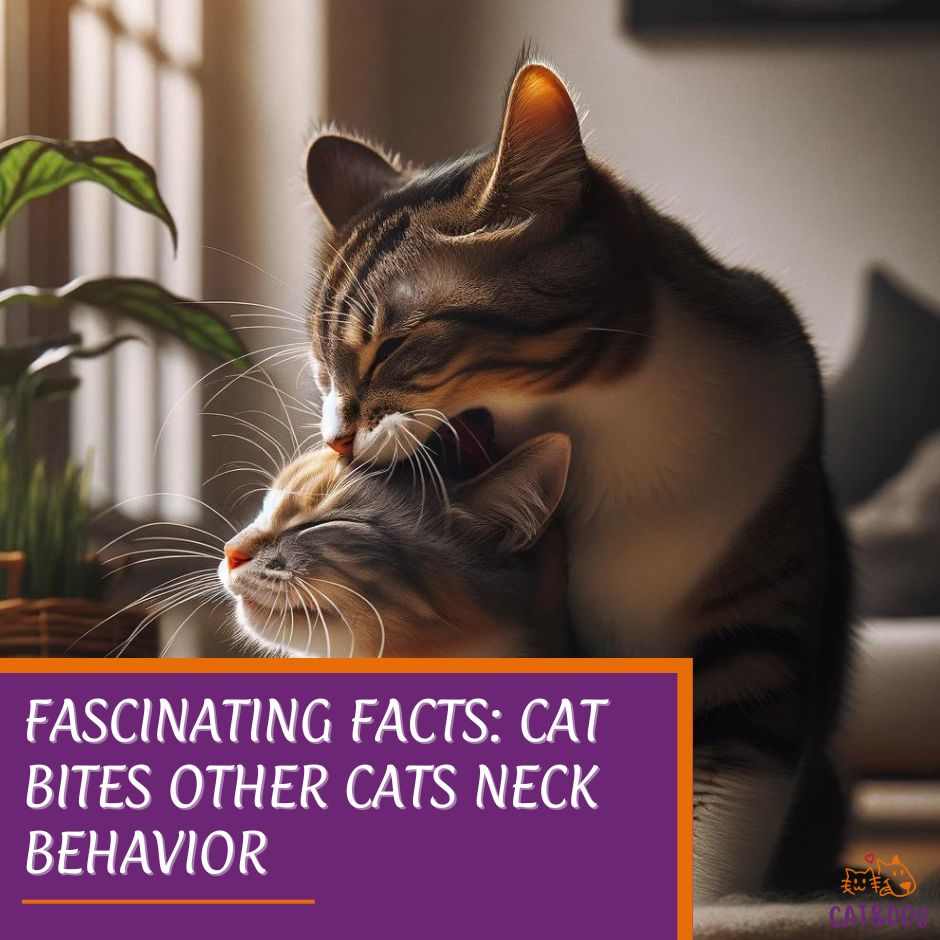Cats are fascinating creatures, aren’t they? You’ve probably noticed your feline friend communicating in a variety of ways.
But, why does a cat bites other cats neck? What kind of behavior is that? Take your time to understand this feline behavior and what to do about it here.
A common behavior that raises both eyebrows and questions is when a cat bites other cats neck. It may leave you wondering, is this normal?
What’s going on when your cat exhibits this kind of behavior towards their feline housemate?
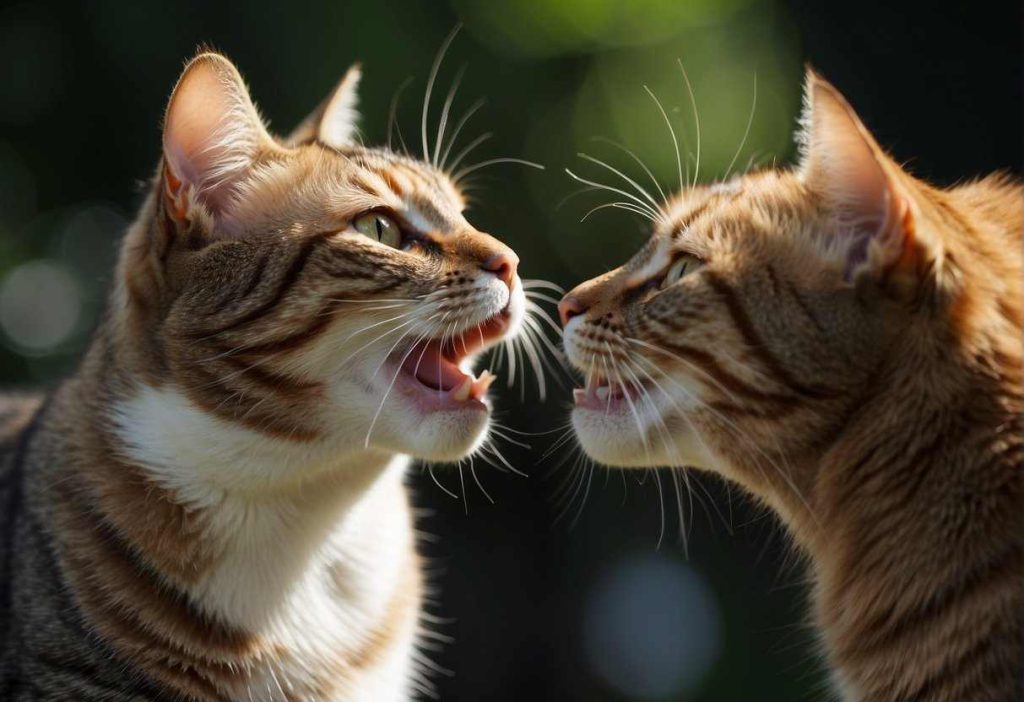
Understanding why cats bite can be as intriguing as the behavior itself. It’s a behavior that serves multiple purposes in the world of cats.
Sometimes, neck biting is part of their play routine, while in other situations, it could be a sign of aggression or even affection.
As a pet owner, it’s important to distinguish between these motivations because how you respond could have a significant impact on the well-being of your pets.
Recognizing the difference between a friendly nibble and a hurtful bite is crucial.
Your ability to identify these behaviors not only keeps the peace in your multi-cat household but also ensures the health and happiness of your furry companions.
Now, let’s take a closer look at what may lead a cat to bite another’s neck and how you can effectively address it.
Key Takeaways
- Neck biting in cats can signify play, aggression, or other forms of communication.
- Recognizing the context of neck biting is important for understanding feline behavior.
- Effective responses to neck biting vary based on the underlying cause.
Cat Bites Other Cats Neck: Recognizing and Responding to the Behaviors
Have you ever noticed your feline friend suddenly biting another cat’s neck more aggressively than usual? It might be time to listen to what their behavior is trying to say.
If this change is abrupt, your cat could be signaling that something’s not quite right with their health, and a trip to the vet may be in order.
Common Signs to Watch For:
- Increased Aggressiveness: Especially if it’s directed at specific areas like the neck. (1)
- Changes in Mood: Your usually calm kitty is now a little ball of fury. (2)
- Avoidance of Touch: Does your cat recoil when you pet them near their neck or head?
Potential Medical Issues:
- Dental Problems: Pain from toothaches or gum disease can make a cat cranky. (3)
- Hyperthyroidism: This can make cats irritable and more prone to lash out. (4)
When you spot these signs, don’t wait; it’s time for professional advice.
Keep a behavior diary if you can – noting the when, where, and what of these biting episodes can be incredibly helpful for your veterinarian.
| Behavior | Possible Cause | Action to Take |
|---|---|---|
| Aggressive neck biting | Pain or discomfort | Schedule a vet visit |
| Sudden mood changes | Underlying health issue | Observe and record incidents for the vet |
| Recoiling from touch | Sensitive areas | Be gentle and consult your vet for a check-up |
Remember, your kitty might not be trying to be the bully on the block – they’re possibly in some sort of distress.
You know your furry companion best, so trust your gut and get them checked out. After all, we want all nine lives to be as peaceful and healthy as possible, don’t we?
Addressing Neck Biting: From Understanding to Action
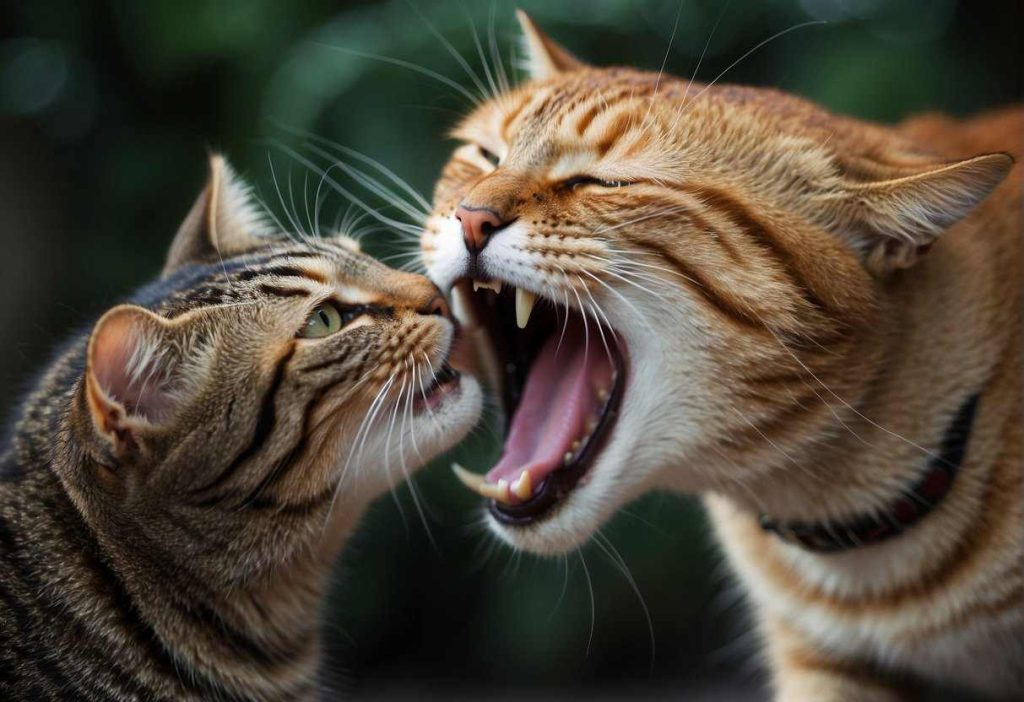
Tailored Advice for Handling and Prevention
Kittens are like little bundles of energy, and they might not know their strength. To keep things friendly:
- Distract them with a variety of toys. (5)
- Make playtime a solo mission to tone down the roughhousing.
Do you have an adult cat taking the vampire route on their fur siblings? Here’s the scoop:
- Create personal areas where each cat can have a time-out.
- Think about chatting with a cat behavior expert if things get hissy.
Are new whiskers on the block? Cats can take their turf very seriously, so:
- Let them sniff out the situation with controlled meet-and-greets. (6)
- Go slow—treats and patience are your best pals here.
Behavioral Modification Techniques
Got a clicker? It’s not just a TV remote doppelganger—it’s a ticket to better manners. Here’s the deal:
- Click = Good behavior, like not biting. Treats seal the deal.
If home remedies aren’t cutting it, professional cat whisperers might be your next step. They’ve got:
- Strategies to chill out your furballs when they get spooked or psyched.
Remember, the goal is happy, harmonious play. Monitor their tumbles, step in if things escalate, and reward the good vibes.
With your guidance, your feline friends can keep their teeth to themselves and still have a purrfectly good time.
Behavioral Patterns: Playful vs. Aggressive Neck Biting
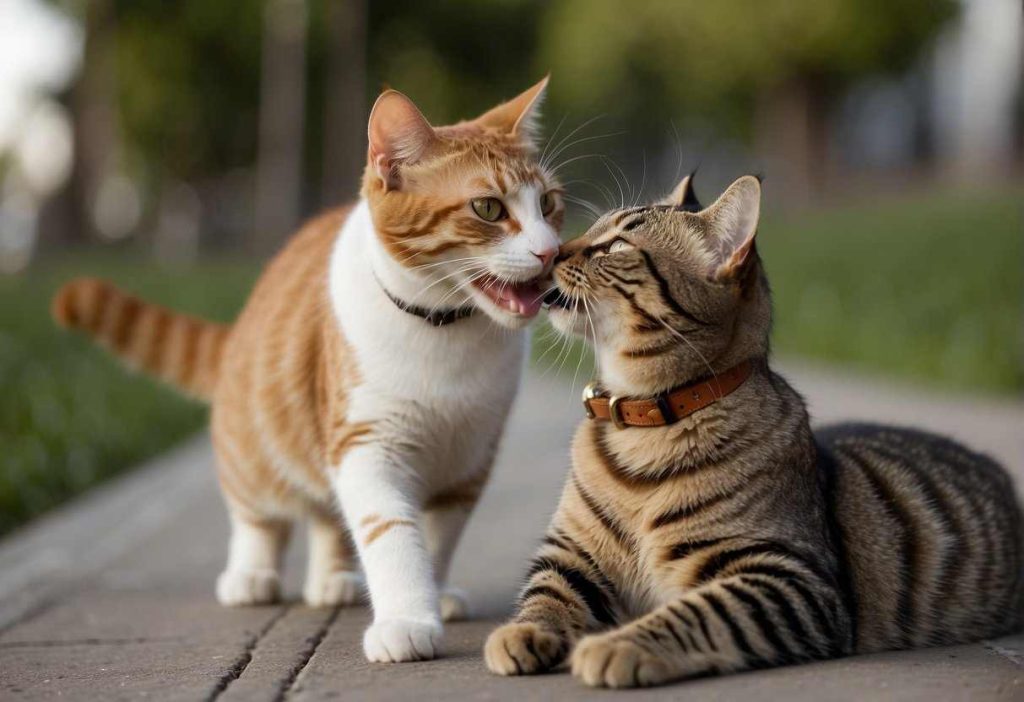
Playful Neck Biting:
- It’s all in good fun!
- You’ll see this with kittens and young cats, especially littermates.
- These gentle nips are more like love bites; they’re soft and don’t cause any harm.
- It’s a form of social play that helps them bond and learn the ropes of cat communication.
Aggressive Neck Biting:
- Now, this one’s not part of the fun.
- If you hear growling or hissing, that’s a red flag.
- Watch out for other stress signals: flattened ears, puffed-up fur, or a lashing tail.
- Cats might do this when they’re scared, fighting for territory, or asserting dominance.
Let’s put this into a quick reference chart:
| Type of Biting | Sounds | Other Signs | Purpose |
|---|---|---|---|
| Playful | Rarely any | Gentle, no marks left | Social play, bonding, and learning |
| Aggressive | Growling, hissing | Flattened ears, puffed-up fur | Defense, territory disputes, dominance assertion |
Remember, every cat’s different, and they have their quirks when it comes to getting along—or not—with their pals.
So, keep an eye out for these behaviors, and make sure the playtime stays playful. If things seem to escalate, it may be time to intervene or consult with a vet or a feline behaviorist.
Your kitty’s well-being always comes first, after all!
Environmental and Stress Factors
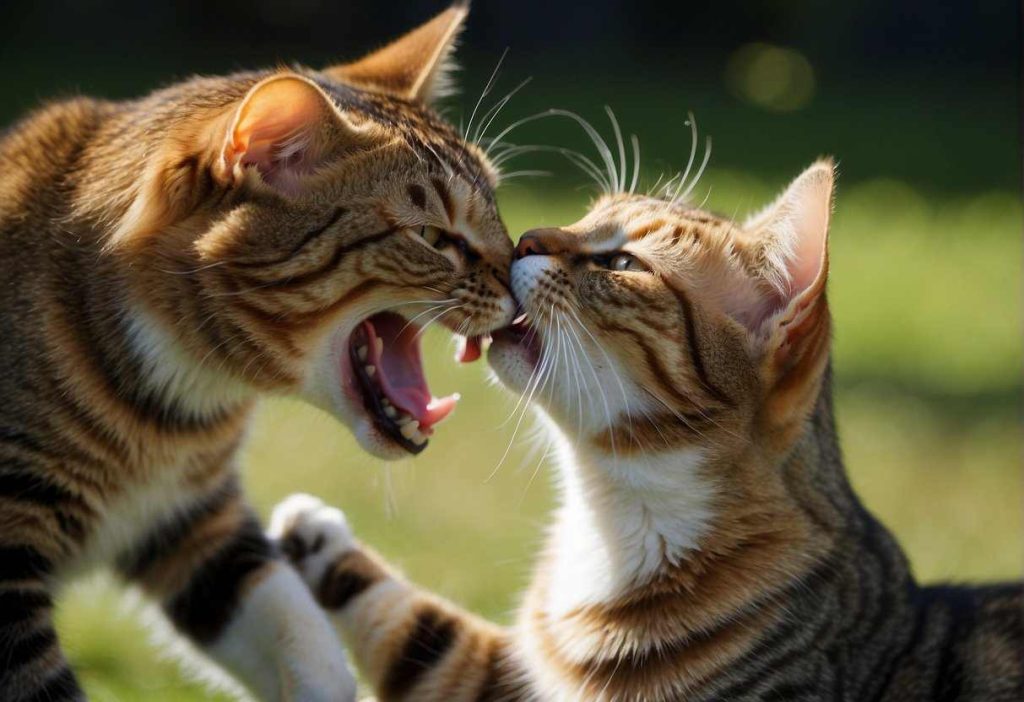
Imagine you’re trying to relax and everywhere you turn, there’s chaos. It’s no wonder that sometimes cats may lash out, and one of the ways they express their anxiety is through neck bites on other cats.
Why does this happen?
Well, it’s all about personal space and resources. Cats are territorial by nature; they thrive on having their little corners of the world.
If those spaces are constantly invaded, it results in tension. Here’s a quick breakdown of how to minimize the fur flying:
- Create a Zen Zone: Just like you, cats need a place to de-stress. Giving each cat their own safe space can help a ton. This can be as simple as a cardboard box or a special shelf.
- Resources Galore: Ensure there are enough toys, litter boxes, and feeding stations to go around. A good rule of thumb is to have one more of each resource than the number of cats in your household.
- Routine Reigns: Cats are creatures of habit. Keeping a consistent schedule for feeding, play, and cuddle time can help prevent those pesky stress-induced squabbles.
Remember, your fluffy companions don’t have the words to tell you they’re feeling crowded.
It’s up to you to read the signs and help them out. Keep their environment serene, and the neck biting incidents should decrease.
After all, a happy cat feels secure in its little piece of paradise—at least until the next cardboard box comes along!
Scientific Exploration of Neck Biting in Cats

Genetic Links:
- Big cats do it: Lions, tigers, and leopards bite necks to show who’s boss or to make a quick meal.
- Your kitty at home: Inherits this behavior, using it in play or to assert dominance.
Hunting Habits:
- Aim for the neck: It’s nature’s way for cats to swiftly stop their prey in its tracks. (7)
- It’s all about speed: By targeting the neck, cats aim to immobilize quickly and efficiently.
You might catch your cat in the act, pinning down a furry sibling with a neck bite – don’t worry, it’s usually just play-fighting or a show of control.
If you’re curious about observing big cat behavior, documentaries, and nature channels offer a window into their world, showcasing just how innate neck biting is.
When you see your cats interacting, keep an eye out for neck biting as a sign of their wild ancestry in action.
Here’s a quick table to sum it up:
| Domestic Cats | Big Cats |
|---|---|
| Playful | Assertive |
| Control | Deadly |
| Instinctual | Instinctual |
Remember to keep it friendly, provide clear pathways through your content, and avoid unnecessary complexity to remain accessible to everyone.
Keep the info flowing and you’ll not only educate but also charm your readers with your grasp of feline behaviors!
Learning from Others: Real-Life Examples and Case Studies
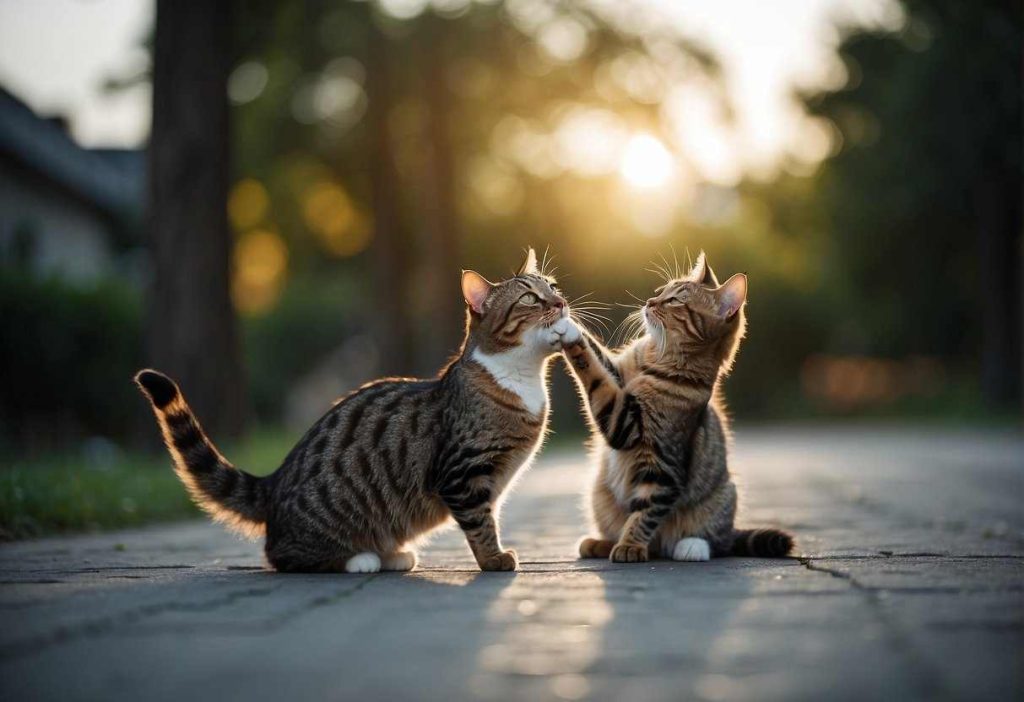
Cat bites other cats neck can be a sign of play, dominance, or even affection, but when it gets out of hand, it’s important to learn from what others have done to mitigate the issue.
Success Stories in Managing Neck Biting
Curious about what works? Check out these real-life wins!
- Structured Play Sessions: In one multi-cat household, the introduction of structured play sessions led to a whopping 70% reduction in neck biting. How did they do it? By scheduling regular playtimes with various toys, the cats burnt off excess energy and reduced their aggressive behavior towards each other.
- Diet and Enrichment: A notable personal anecdote shared by a fellow cat owner reveals how switching to a high-quality diet and the addition of more enrichment toys can work wonders. These changes addressed their cat’s underlying stress and redirected the neck-biting behavior.
Here’s a quick reference of these effective strategies:
| Strategy | Reduction in Neck Biting | Key Changes Made |
|---|---|---|
| Structured Play Sessions | 70% | Regular playtimes with toys |
| Diet Change & Enrichment Toys | Significant | High-quality diet & new toys |
Remember, each cat is unique, so what works for one may not work for another; however, these strategies might just be the ticket to a more peaceful home.
Have you found something that has worked wonders for your cats? Share your story!
Quick Recap
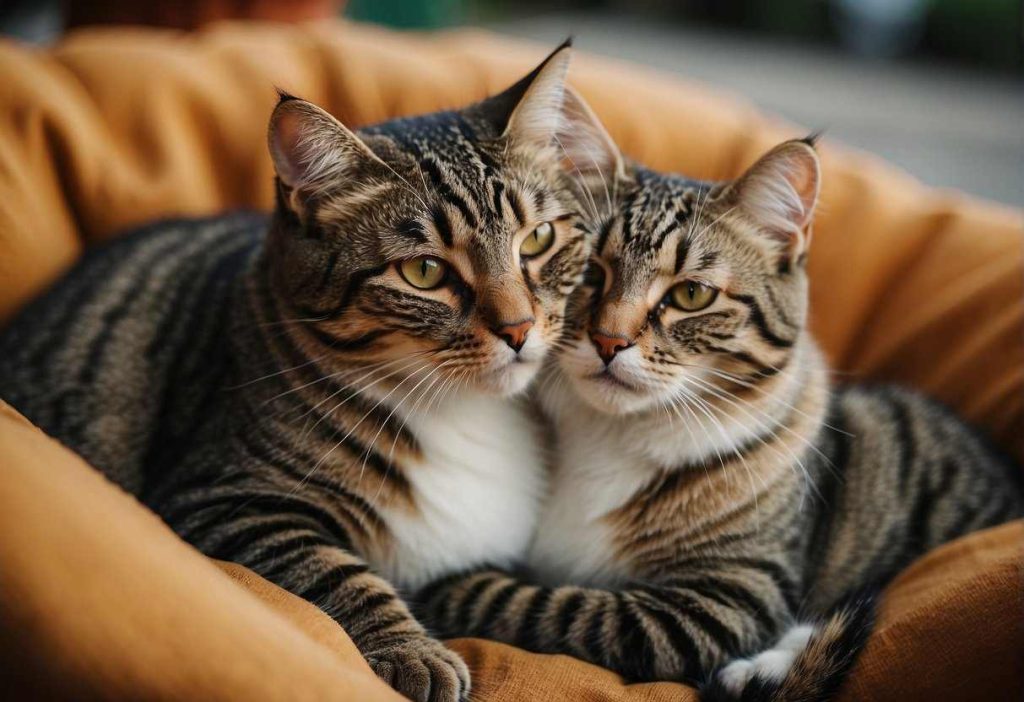
Key Factors:
- Cats use neck biting as a way to establish dominance or initiate play.
- Health issues can also cause a behavior change, leading to biting.
Strategies to Manage Biting:
- Observe behavior to identify triggers.
- Provide ample play opportunities to reduce aggression.
- Introduce new toys to distract from biting habits.
Don’t forget, it’s not one size fits all!
Each kitty is unique, with its personality dictating the approach you should take. Nurturing a harmonious environment tailored to their needs can reduce neck-biting incidents.
Are your cats spayed or neutered?
This can impact their behavior significantly, often lowering aggression levels. Remember, you’re the key to helping them live together peacefully!
Stats and studies aren’t included, but here’s what you should take from this recap:
Understanding the why behind the bite and crafting a response specific to your little lions. It seems daunting, but you got this!
Lastly, neck biting isn’t necessarily a cause for alarm, but do keep an eye on them.
If the behavior intensifies or becomes aggressive, consulting a veterinarian or a feline behaviorist should be your next step.
Frequently Asked Questions
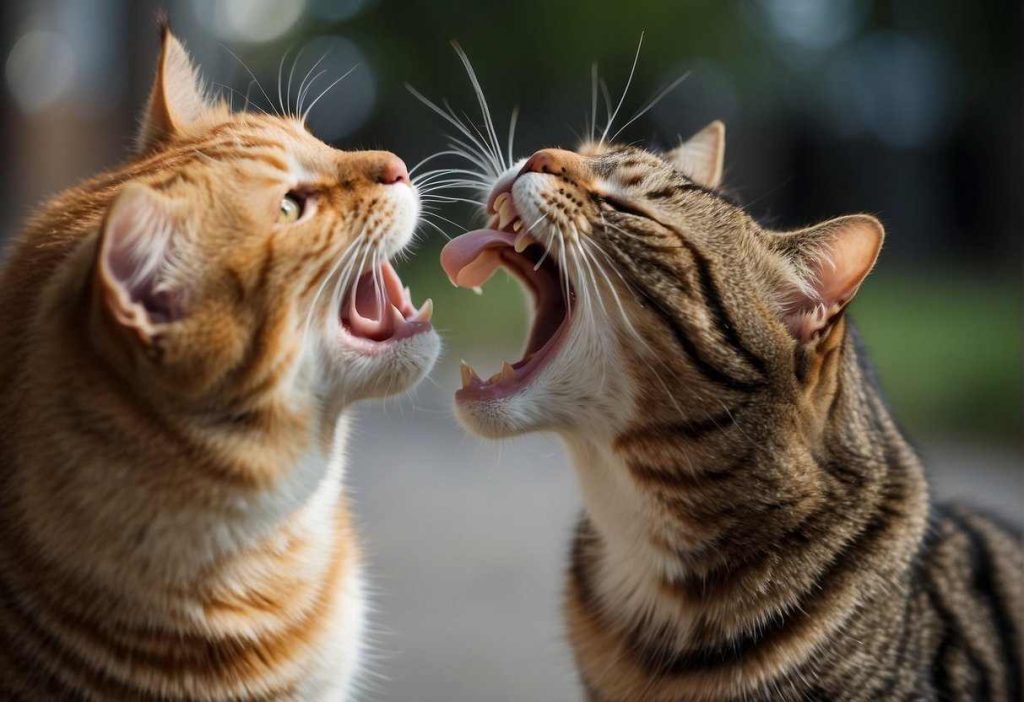
Cat behavior, especially when it involves neck biting, can perplex you as a pet owner. You might wonder whether it’s a sign of affection or aggression.
Let’s tackle your most pressing concerns about this peculiar feline conduct.
What should I do if my cat suddenly starts biting another cat’s neck aggressively?
If your cat begins to bite another cat’s neck with clear aggressive signs, you should separate them immediately to prevent injury.
After giving them time to calm down, reintroduce them slowly, monitoring their behavior closely.
How can I tell if my cat’s neck biting is playful or aggressive?
Playful neck biting typically involves gentle nips and is accompanied by relaxed body language and no hissing or growling.
In contrast, aggressive biting appears more forceful, and the cat may have a tense body, flattened ears, or maybe hissing.
Can neck biting lead to injuries between cats?
Yes, neck biting can lead to injuries, particularly if it’s aggressive and persistent.
The skin can be broken, leading to infection or more serious injuries. Always check for wounds and consult your veterinarian if necessary.
Why does my cat bite the neck of its toy or blanket?
Your cat may bite the neck of a toy or blanket as part of its predatory instincts.
This behavior mimics the killing bite used on prey in the wild and is a normal aspect of feline play.
Is there a way to stop my cats from biting each other’s necks?
To stop your cats from biting each other’s necks, encourage positive interactions with joint playtime and provide each cat with their own space and resources.
Supervise their interactions and deter aggressive play with distractions.
What could be causing my cat to first lick, then bite another cat’s neck?
Your cat may first lick, then bite another cat’s neck as a grooming gesture that becomes overstimulated, leading to a bite.
This can be a sign of affection or a way to assert dominance.
Could my cat’s neck biting be a sign of a medical problem?
While neck biting is often behavioral, it can be driven by a medical issue such as dental pain or skin irritation.
If the behavior is sudden and accompanied by other symptoms, a vet visit is essential to rule out medical causes.
- The Ultimate Overview to Actual Cash Gambling Establishments - July 1, 2025

